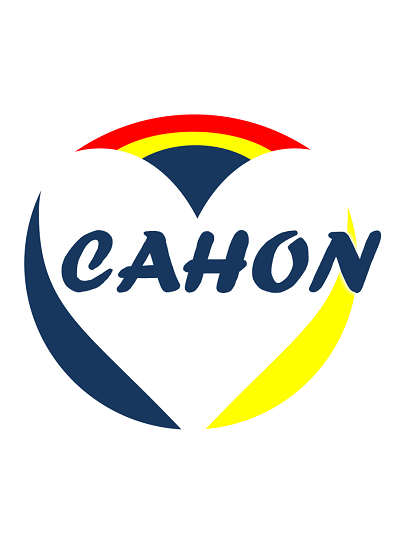Outcomes of patients with secondary central nervous system lymphoma following CAR T-cell therapy: a multicenter cohort study
IF 29.5
1区 医学
Q1 HEMATOLOGY
引用次数: 0
Abstract
Chimeric antigen receptor T-cell therapy (CAR-T) has been successful in treating relapsed/refractory B-cell lymphomas. However, its role in the treatment of diseases involving the central nervous system (CNS) is not well studied. We performed a multicenter retrospective cohort study to evaluate the outcomes of patients with secondary CNS lymphoma (SCNSL) who received CAR-T. Eligibility required active CNSL at the time of apheresis. The objectives included evaluation of overall survival (OS), progression-free survival (PFS), identification of predictors of complete response (CR) post-CAR-T, and assessment of risk factors for cytokine release syndrome (CRS) and immune effector cell-associated neurotoxicity syndrome (ICANS). Sixty-one patients were included in the analysis. The overall response rate was 68% with a CR rate of 57%. In the multivariable analysis, patients who experienced any grade CRS had higher odds of achieving CR (OR = 3.9, 95% CI = 1.01–15.39, p = 0.047). The median PFS was 3.3 months (95% CI = 2.6–6.0 months) with 6- and 12-month PFS rates of 35% and 16%, respectively. The median OS was 7.6 months (95% CI = 5.0–13.5 months) with 6- and 12-month OS rates of 59% and 41%, respectively. Any grade CRS and ICANS were 70% (n = 43) and 57% (n = 34), respectively with grade ≥ 3 CRS and ICANS rates of 16% and 44%. Factors associated with increased risk of CRS and ICANS included receiving axi-cel or having leptomeningeal ± parenchymal + CNS involvement, respectively. Despite achieving high response rates, most patients experience early relapse or death following CAR-T in SCNSL. The current study provides a benchmark for future trials exploring novel therapeutic options in SCNSL.CAR T细胞治疗后继发性中枢神经系统淋巴瘤患者的预后:一项多中心队列研究
嵌合抗原受体T细胞疗法(CAR-T)已成功治疗复发/难治性B细胞淋巴瘤。然而,它在治疗涉及中枢神经系统(CNS)的疾病中的作用还没有得到很好的研究。我们进行了一项多中心回顾性队列研究,以评估接受CAR-T的继发性中枢神经系统淋巴瘤(SCNSL)患者的预后。资格要求在单采时激活CNSL。目标包括评估总生存率(OS)、无进展生存率(PFS)、确定CAR-T后完全反应(CR)的预测因素,以及评估细胞因子释放综合征(CRS)和免疫效应细胞相关神经毒性综合征(ICANS)的风险因素。61名患者被纳入分析。总有效率为68%,CR率为57%。在多变量分析中,经历任何级别CRS的患者获得CR(OR = 3.9,95%CI = 1.01–15.39,p = 0.047)。中位PFS为3.3个月(95%CI = 2.6–6.0个月),6个月和12个月PFS的发生率分别为35%和16%。中位OS为7.6个月(95%CI = 5.0-13.5个月),6个月和12个月OS发生率分别为59%和41%。任何级别CRS和ICANS均为70%(n = 43)和57%(n = 34),分别为等级 ≥ 3 CRS和ICANS的发生率分别为16%和44%。与CRS和ICANS风险增加相关的因素包括接受axi-cel或患有软脑膜 ± 实质的 + 中枢神经系统受累。尽管获得了很高的应答率,但大多数患者在SCNSL中CAR-T后会出现早期复发或死亡。目前的研究为未来探索SCNSL新治疗方案的试验提供了一个基准。
本文章由计算机程序翻译,如有差异,请以英文原文为准。
求助全文
约1分钟内获得全文
求助全文
来源期刊
CiteScore
48.10
自引率
2.10%
发文量
169
审稿时长
6-12 weeks
期刊介绍:
The Journal of Hematology & Oncology, an open-access journal, publishes high-quality research covering all aspects of hematology and oncology, including reviews and research highlights on "hot topics" by leading experts.
Given the close relationship and rapid evolution of hematology and oncology, the journal aims to meet the demand for a dedicated platform for publishing discoveries from both fields. It serves as an international platform for sharing laboratory and clinical findings among laboratory scientists, physician scientists, hematologists, and oncologists in an open-access format. With a rapid turnaround time from submission to publication, the journal facilitates real-time sharing of knowledge and new successes.

 求助内容:
求助内容: 应助结果提醒方式:
应助结果提醒方式:


